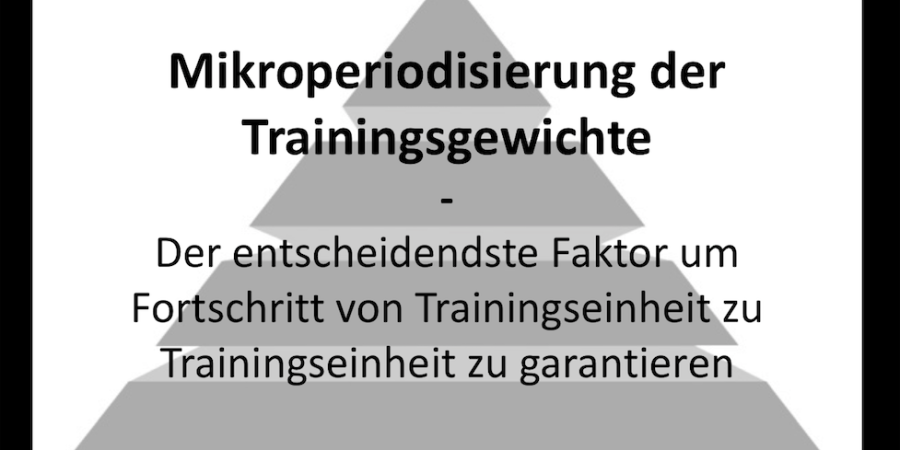The term periodization is well known in sports science. It defines the division of training into individual cycles in which the individual training parameters - sets, repetitions, pace and rest - as well as exercises, frequency, total volume, average intensity and peak intensity are structured in phases to enable constant training progress.
The periodization is classically divided into the following four units:
Training session (1h)
In classical sports science, the training unit is the smallest self-contained element of training. The training session is largely determined by decisions about training content and training methods, which result from the specifications of the training plan and from the current status and goal of the athlete.
Microcycle (3 days to 1 week)
In sports science, a microcycle is the shortest training phase that regularly recurs in terms of its basic structure and task. Elements of the microcycle are individual training units. The objective of a microcycle is primarily derived from the superordinate mesocycle. The deload is one of the most well-known and efficient elements of the microcycle.
Mesocycle (2 to 4 weeks)
In sports science, a mesocycle is a medium-length training section that is repeated in its basic structure and task and is composed of several microcycles as part of a macrocycle.
Macrocycle (3 to 12 months)
In sports science, a macro cycle is a longer, regularly recurring training phase with a similar task and basic structure. A macro cycle can range from a few months to a year.
So what is microperiodization?
In sports science, the structuring of micro-, meso- and macrocycles has been dealt with intensively for decades. However, the structuring of total volume, average intensity and peak intensity within a completed training session was always left out. That's how I defined the term "microperiodization" a few years ago, which deals with the structuring of total volume, average intensity and peak intensity within a training session. The most crucial factor here is how do I choose a weight within an exercise within a workout. This has a great influence on the training effect and progress.
Example:
Option A - 8 sets of 3 reps LH bench press. Start with a heavy set and reduce the weight from set to set (by about 2% each). Set 1 - 90kg for 3 reps Set 2 - 88kg for 3 reps Set 3 - 86kg for 3 reps Set 4 - 84kg for 3 reps Set 5 - 82kg for 3 reps Set 6 - 80kg for 3 reps Set 7 - 78kg for 3 reps Set 8 - 76kg for 3 reps Total volume: 24 reps totaling 1992kg Average Intensity: 83% Peak Intensity: 90% Option B - 8 sets of 3 reps LH bench press. Increase to a heavy set (spread around 25%). Set 1 - 70kg for 3 reps Set 2 - 75kg for 3 reps Set 3 - 80kg for 3 reps Set 4 - 85kg for 3 reps Set 5 - 87.5kg for 3 reps Set 6 - 90kg for 3 reps Set 7 - 92.5kg for 3 reps Set 8 - 95kg for 3 reps Total volume: 24 repetitions for a total of 2025kg Average Intensity: 84.4% Peak Intensity: 95%The differences between the two types of microperiodization are clear. Metabolic stress, peak weight, and the ability to increase weight from workout to workout are the three main differences. Theory is important, but never beats practice. I recommend everyone to train these two systems with the specified percentages (kg = %) for 6 training units each and thus experience the differences for yourself.
Basically, there are four different ways to structure the weight of an exercise within a training session:
1. Working up to a peak weight
2. Start with a heavy set and reduce the weight or reps with each set
3. Identical weight for all sets
4. To structure the weight in waves
These four possibilities and micro-periodization form offer different advantages and areas of application.
In module 3 of the YPSI Trainer B license, the YPSI program design seminar, I go into detail about the advantages and disadvantages as well as their use.
Good luck with microperiodization and even more progress in training!

